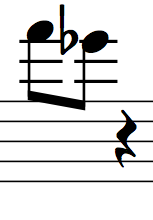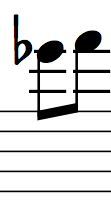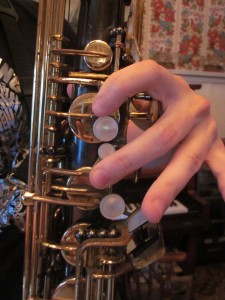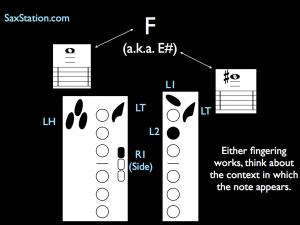One fingering between F and Eb is rather clumsy, while another one can be done smoothly.
(Click on this link to check out all the Saxophone Fingerings)
This combination of two notes doesn’t come up all the time, but it does enough that’s it’s good to note a better transition.


The fingering that most sax players learn for F, or I did at least since it’s in the standard fingering chart, is somewhat clumsy in a some cases. Chromatically it makes sense, but not all the time.
It involves all three of the spoon keys, the octave key, and the top key in the row where the side Bb key is. The other fingering uses the ‘high F’ key with the pointer finger of the left hand and the middle finger of the left hand pressing the C key (and the octave key). Here’s a diagram of both options.
Here’s a picture of me playing the second option.

To go from that second fingering to Eb or from Eb up to F is much easier that way.
I noticed this transition recently come up several times in the Jackie McLean warm-up book since the scales go across the range of the saxophone, as well as some etudes that I have.
What alternate fingerings do you tend to use the most?




Simple, please post a visual of what you are trying to explain. Thank you.
From the top key…
X <—–this is the one above the key you normally have your pointer finger on.
O
X
O
O
O
O
plus octave
Most excellent. I have trying to find the solution for ages. For those who still do not understand: Above the top pearl there is like a tear drop shaped button. push this with the c pearl and Octave.
Clear sounding third high f.
If you push the bottom of the three palm keys as well, you will get a third high F#
X <—– the tear drop key
O
X <—- C
O
O
O
O
plus octave
[]
[]
[] <—– push this as well for G
Thanks, I think I’ll just update this post with a diagram.